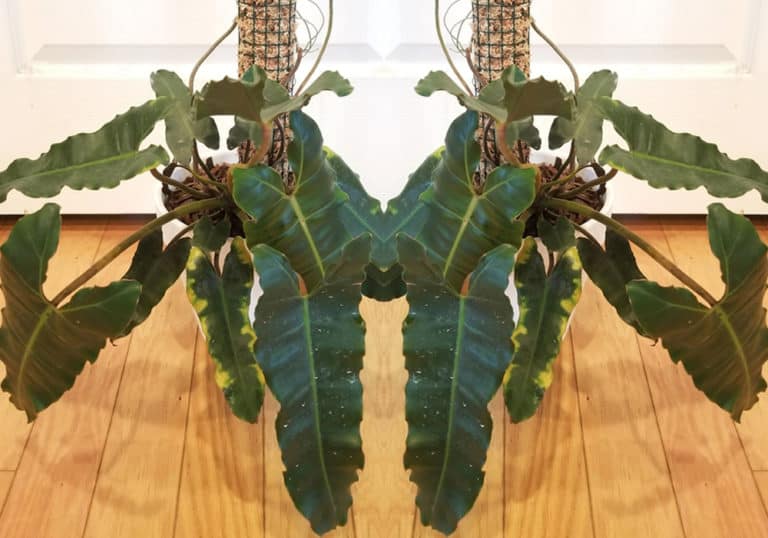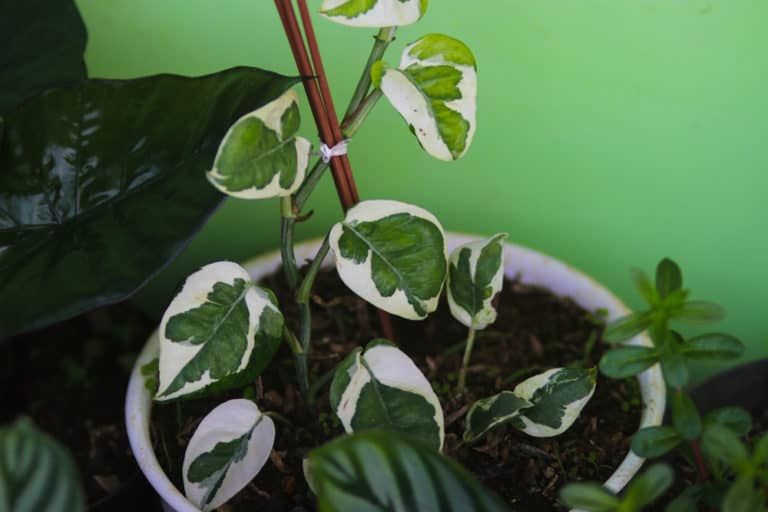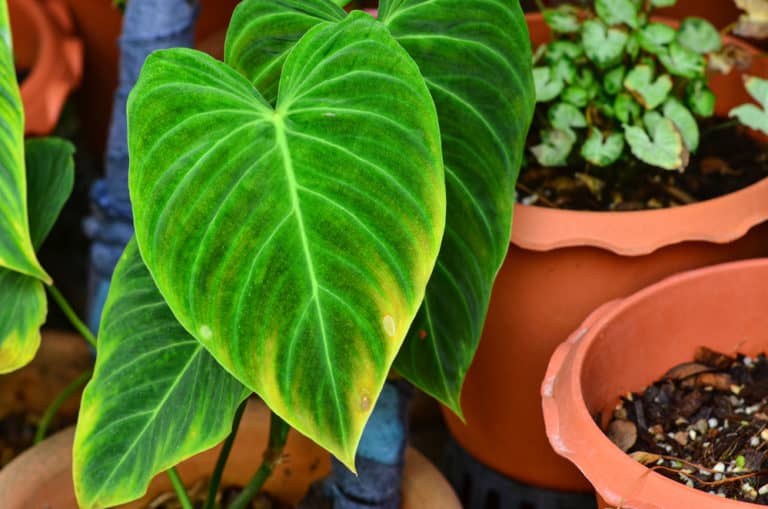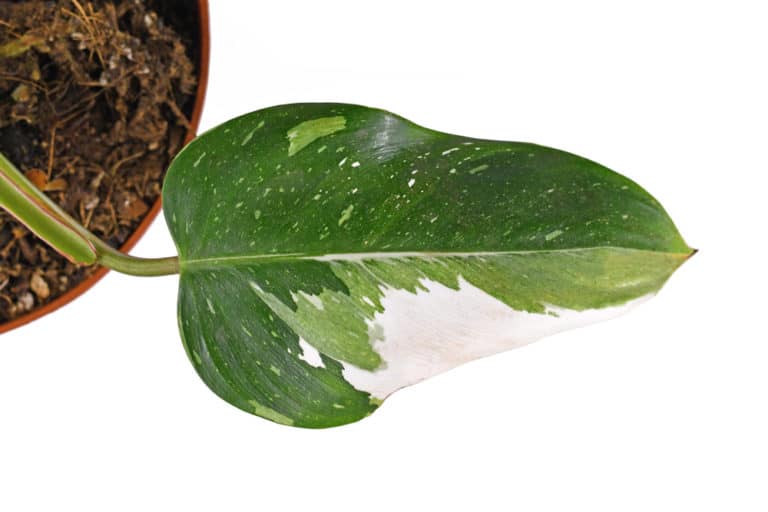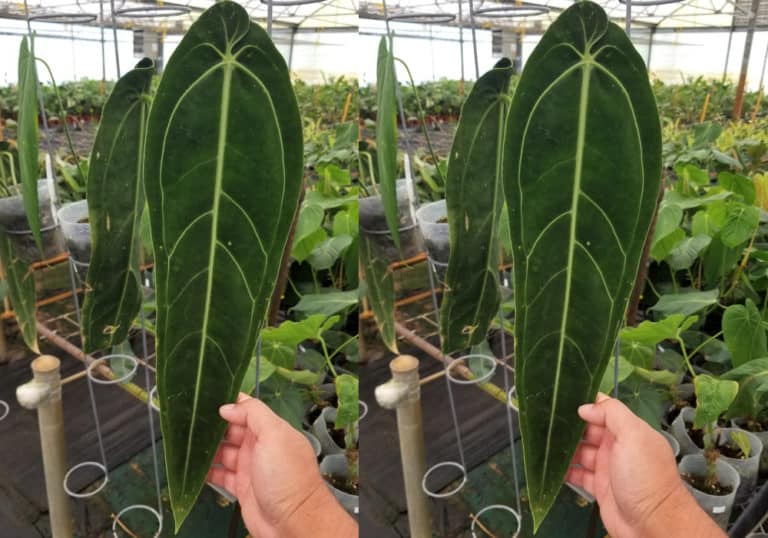Dischidia Ruscifolia ‘Million Hearts’ Care Guide (2024)

You might also know this beauty as “million hearts plant”. Dischidia ruscifolia is an epiphytic plant that is now gaining high popularity, mostly because it is easy to grow it. What is interesting about it, is the word “epiphytic” – it grows and climbs on other trees to survive. It can survive both indoors and outdoors, and it’s easy to care for it.
| Scientific Name | Dischidia ruscifolia |
| Common Name | Million Hearts plant |
| Light | Bright indirect light |
| Watering | When the orchid bark dries out |
| Temperature | 40° to 80°F (4° to 27°C) |
| Hardiness Zone | 11, 12 |
| Humidity | 50-60 % |
| Soil Type | Very loose soil, orchid bark works best |
| Soil pH | 6.0 to 7.5 (mildly acidic) |
| Fertilizing | A balanced feed once a month in spring and summer |
| Repotting | Every 2 years, look for roots at the pot bottom |
| Pruning | Beginning of the growing season |
| Propagation | Root in water or soil |
| Toxicity | Toxic to humans and pets |
| Mature Size | 12-18’’ ( 30-46cm) |
| Bloom Time | e.g. Late spring, early summer |
What’s Unique About Dischidia Ruscifolia?
Personally, I love Dischidia ruscifolia because it is a plant that behaves “outside of the box”.
Due to its epiphytic nature, you can grow it a bit differently than your other plants- you don’t need to pot it with some loose soil and just leave it there.
You can use orchid bark, and let it enjoy the acidity, or even wrap all the roots in some moss and mount it on a spare tree bark you can find in nature.
You get the idea now, right?
It gives you a new perspective when it comes to plant care and maintenance. It’s a fast grower, easy to look after and it is great for a new plant parent.
Dischidia Ruscifolia Care
Whether you decide to keep the plant indoors or outdoors, the million hearts plant care is the same. The most important thing you need to remember is the epiphytic nature of the plant.
Make it feel at home, and let it grow as it does in nature. The soil type and the watering are the two important factors for success when it comes to Dischidia ruscifolia plant care.
Light
In nature, this plant hides under large trees. You will usually find it on the tree barks, climbing and hugging other plants too.
Here is the big difference when it comes to Dischidia ruscifolia light requirements: outdoors, you can use the “outside of the box” thing it has, and plant it near a big tree. Let it enjoy the climbing, and the filtered light it will get. It is best not to have it in full sun.
If you want to have it as your roommate indoors, you can actually place it right in front of a window; it will thank you for it.
Depending on how big the windows are, and how much light you can get, if the plant has around 1000 lux throughout the day it will be alright. 1000 lux translates to those really nice and warm early spring days, when the sun is bright but not too hot.
During the summer, you can move the plant away from the window, and place it next to it.
For the million hearts plant light needs, if you want to use a grow light, you can, in case you don’t have a very bright space. Just make sure though that it emits the right amount of lux.
Watering
When you water the million hearts plant, remember that less is more. Think about it – since it climbs, it only gets the water in the rainforest when it is raining for some time, until it rains again.
This will give you a good perspective on the watering needs. Even if you use loose, fast draining soil, orchid bark or moss, the Dischidia ruscifolia watering is really simple.
Water it once it is about to dry. If you feel that moisture is still there, let it sit for one day and then water the plant thoroughly.
Note that with moss and orchid bark, you just need to dip the pot or the moss ball in water for 20 minutes. Then you are good to go!
Temperature
The ideal temperature for million hearts plant is between 40° to 80°F (4° to 27°C). The hardiness, and the temperature tolerance, are two important reasons why this plant became popular.
You won’t face any difficulties when you are about to achieve the Dischidia ruscifolia temperature range. If it becomes too hot, your plant friend will be okay. If it gets too cold though, it might not like it, but it can withstand it.
If the temperature rises quickly, place next to the plant some pebbles or lecca in water. This will help it maintain the ideal temperature and perspire normally. If the temperature drops, you can place it a few meters away from the heater, just so it can feel some warmth.
Humidity
This plant is an intense lover of humidity, since it originates from the forests of Asia. Imagine walking in the rainforest. Within a few minutes, you start feeling hot and your skin feels sticky, although you showered just a few minutes ago.
This is the humidity level it loves. You might now think “there is no way I can reach this in my apartment!”
You can! All you need to do to reach the ideal humidity for million hearts plant, is to place it next to your other plants. They will share the humidity together with no issues at all.
The trick with the pebbles/ lecca in water can help you here as well. By doing this, you will easily reach the 40% of the humidity level it needs.
If you want to achieve the best Dischidia ruscifolia humidity requirements, you can invest in a humidifier, so it can keep the levels steady throughout the day.
Soil
Here is the most interesting part and the one thing you need to get right. For the Dischidia ruscifolia soil, I will persist and advise you to either plant it in lecca, or orchid bark if you want to have the plant in a pot.
This is the ideal soil mix when you are researching the soil for million hearts plant. The orchid bark since it has a pH of 6.0 at least, it will keep the acidity high.
Since the million hearts despise heavy soil mixes, if you want to use soil you can. Just make sure it is really loose. Coconut coir will do the work.
If you want to take this to the next level, add the sphagnum moss around the roots and tie it up. Use a moss pole, and mount the plant on it.
Use rocks, pebbles around the plant to make a stunning natural installation. It is incredible to watch! What I just described is a small depiction of what you can do to make the plant feel like it is back home. With the right soil, it just thrives!
Fertilizer
Plant food is important for all the plants we have, because it gives them the minerals they need to grow. The ideal Dischidia ruscifolia fertilizer is the NPK 20-20-20 or NPK 9-9-9. It is light, the fertilizer ratio is easy to follow and it strengthens the roots furthermore.
Remember, you won’t have to use any fertilizer for million hearts plant during the winter, since the plant is dormant. You will use it during spring, every 20-25 days.
If you want to enhance the acidity, you can add some chalk near the roots. Just sprinkle it around them lightly, and watch what will happen next- it will become bigger for sure.
Potting & Repotting
The Dischidia ruscifolia repotting is another tricky part. If you are using soil, make sure you see roots at the bottom of the pot before you repot it.
It won’t happen often, but for the repotting of million hearts plant, you will need the right pot size, before you proceed in any potting process.
If you indeed use orchid bark, lecca or moss, at some point you will see the roots outgrowing, and they will seem like they are trying to escape. This is how you will know it’s time for repotting.
Be gentle with the roots, since they might need some detangling before you proceed.
Pruning
The Dischidia ruscifolia pruning is the easiest maintenance step when it comes to this plant. You will only need to trim it when it “cascades” too much. In other words, when it’s starting to create a deep waterfall effect and it looks like it is about to fall off.
You can cut the cascading stems and use it for the next maintenance tip we will talk about soon. The cutting of the million hearts plant can happen any season, not just for spring.
Make sure to wear gloves when you’re trimming it, because the sap coming out can cause burns and redness on the skin if it comes into contact with it.
Propagation
Remember the pruned stems you have? You can use these to propagate million hearts plant. The Dischidia ruscifolia propagation can happen for years and years with all the pruned stems you’ll have.
No need for any afterthoughts here, just grab a pair of sterilized scissors and cut the unwanted branches. Always make sure to cut in a diagonal line, so that more water can pass through the stem.
As a precaution, dip the edges in some honey and cinnamon. This will disinfect the area and it acts as a “prebiotic” for the plant- it protects the cut as a shield from any pests especially until a new root comes through.
Common Problems of Dischidia Ruscifolia
As it happens with all plants, you might face some Dischidia ruscifolia problems. The most common problems with million hearts plant are the yellow leaves, and underwatering. You may also experience pests like mealybugs and aphids.
In terms of diseases, rusts and botrytis rots (both fungi) are the ones that cause those annoying black/brown dots on the plant leaves. Please note that this plant usually expresses any distress it may have by having yellow leaves.
Whether you are overwatering, underwatering, overfertlzing, underfertlilizing, this is the language it will have with you. Let’s look closely and review the problems in detail:
Pests
The million hearts plant doesn’t attract bugs and pests. This only happens when something goes wrong with the watering schedule and you have overwatered.
It can also happen when the soil is too dense, not having any time in between to drain. Some common Dischidia ruscifolia pests are mealybugs and aphids.
All you need to do is to spray some neem oil diluted with water (my type of wonder spray, it gets rid of everything) or some rubbing alcohol, dish soap and water. They will have no choice but to walk away.
If it seems impossible to get rid of them, invest in a good fungicide.
Diseases
It can happen, and it isn’t pleasant. However, it is easily retrievable. The known Dischidia ruscifolia diseases are rusts and botrytis rots. In both cases, the plant will look dull, almost turn brown/light yellow.
You will need to grab a pair of scissors and cut them off. Don’t try to solve the issue with homemade recipes- you will need a good fungicide from the local plant store so you can make sure any threat is eliminated from your million hearts plant.
Don’t get discouraged with the instructions you will receive about the fungicide. It might seem like it is a lot of information, but it is needed.
Growing Problems
Sometimes it can take some time before you figure out that there is an issue with your plant. For the Dischidia ruscifolia though, it doesn’t take too much time to let you know that it is indeed a sick plant.
Besides pests, the number one growing problem is the yellowing of the leaves. You will need to check the soil and the quality. If it is too hard and dense, then you will need to choose a different soil mix.
If the soil is too wet, you will need to use your hands and let some air to get through. Wait until it is completely dry, and cut the yellow leaves before the pests find the sap from the leaves.
Toxicity of Dischidia Ruscifolia
The million hearts plant is toxic to humans and pets, mostly because of the sap it contains inside the leaves. It mostly causes toxicity issues when the sap is touched or swallowed.
The same goes for the flowers. The reaction might not be as extreme, but it is best to steer clear from consuming them too.
For Humans
Humans that have sensitive skin should not prune the plant at all. If they have to, they can always wear gloves, since the sap that comes out as you cut the stems is very toxic.
It can lead to redness, and eczema-like marks on the skin.
The marks can happen only when the sap is in large quantities, and it can easily be relieved by pouring lukewarm water over the area that got affected.
Children also face the issue of touching the sap, or even swallow the leaves which is something not advised at all.
For Pets
For pets, it isn’t poisonous as a plant, but it can be quite toxic. Dog owners and cat owners should try to keep their pet away from the plant.
If the sap is swallowed, it causes burns, vomiting and diarrhea in pets. It can also cause burns in the eyes if the sap reaches them, but the burning sensation goes away once you rinse the eye area with some lukewarm water.
As you enter the plant in your garden or at your apartment, make sure to place it somewhere you know for a fact it is hard for your furry friend to come close. This will give you the peace of mind you need.
Dischidia Ruscifolia Appearance
The Dischidia ruscifolia appearance is composed with many, tiny heart-shaped leaves, that have a rich, deep green color. They are glossy, and thick.
Foliage
The foilage of Dischidia ruscifolia is thick and dark green. It is why the plant is classified by many as a succulent. The stems are relatively thin, giving the cascading effect on the plant, which personally I think is the best feature.
This plant also has a variegated form, where the leaves have the same shape, and the same stems. The only difference is that the leaves also have a white-green marble effect on them. You can also find totally white colored leaf in there too.
The flowers on the variegated version are the same. They don’t have any noticeable difference in appearance. They just fall quicker and bloom back in a short period of time.
Flowering
The Dischidia ruscifolia flowering can be mild, but it is easy to catch the eye. The flowers are really tiny, and they are growing in between the leaves.
They have the shape of a small star, and they usually grow four-five petals on each one. The blooming occurs in different times of the year, with no specific schedule.
If the plant is really happy, you will notice that the flowers will start to grow in pairs, and they will take over the stem. Since it blooms often, acknowledge the fact that the flowers won’t stay on for long. If the conditions are perfect though, they will manage to stay on the stem longer than expected.
Size and Growth
The growth rate here depends on how good and optimal the conditions are for the plant to grow. If the conditions and the humidity mostly are idea, the size of Dischidia ruscifolia can reach up to 18 inches (40 cm).
The branches can grow up to 90 cm when they do the whole cascading thing. At this point, you will know that it is time for pruning too.
If you let the plant free to do its own thing, please be aware that at some point the plant will start to look thinner. This is because it needs at some point the stimulation to shoot the new growth. Just like human hair.
Dischidia ruscifolia Fragrance
The scent and the strength depends mostly on the quality of the soil. Since the plant is a bit acidophilic, it will emit a stronger scent if the pH of the soil is optimal.
In general, the Dischidia ruscifolia fragrance is easy to live with, and most of the time, it will surprise you, since you won’t realize that the scent is coming from the flowers sometimes.
It is mild and sweet, and has a waxy sensation in the nose.
You might not know this, but the dischidia ruscifolia fragrance is commonly used in the recipes for body lotions for women. We can easily guess why!
Suggested Uses for Dischidia Ruscifolia
Now the beauty of this plant is that you can use it both indoors and outdoors as a statement piece. Use its nature and give it some space to climb by using moss poles and tree branches.
You can have a small plant installation with your Dischidia ruscifolia, and place it on your coffee table (if you have lots of sun and a bright room).
If you plant it outdoors, use a tree with a thick bark, because our friend has the tendency to take over the entire space and becomes quite strong.
Use it as your landscape feature, with many other Dischidias if you want, to create some volume and effect.
FAQ
What is Dischidia ruscifolia?
It is an evergreen, epiphyte plant, originating from Asia.
How to identify Dischidia ruscifolia?
The plant has rich green heart shaped leaves, that are really thick. It also has small star shaped with flowers.
How to care for Dischidia ruscifolia?
Make sure it gets enough light, water it when it gets dry and prune it when the stems hang too much.
How to grow Dischidia ruscifolia indoors?
Place it near a window, watch your watering schedule and make sure the humidity stays close to 40% the least.
How to grow Dischidia ruscifolia outdoors?
Place it under a big tree, and give it space to climb on the tree bark. Water and fertilize as discussed above.
How fast does Dischidia ruscifolia grow?
The plant isn’t a fast grower, but tends to grow more during spring and summer. In the winter, it becomes somewhat dormant.
How tall does Dischidia ruscifolia grow?
Up to 18 inches tall (40 cm).
How to make Dischidia ruscifolia grow faster?
Ferliize it during spring and summer, and make sure it gets enough humidity.
How to stake Dischidia ruscifolia?
Use a moss pole and some soft garden wire, to tie the stems carefully on the pole.
How to pot Dischidia ruscifolia?
Either use very loose soil, or orchid bark/lecca and pot the plant with it in a pot.
How to revive Dischidia ruscifolia?
In most cases, the watering is to blame. Make sure you either water it frequently when it dries out, or back off if it is still moist.
Why is my Dischidia ruscifolia dying?
There might be some bacterial/ fungal disease there. Check for any yellow leaves and if you know your watering is correct, visit the nearest plant shop for some fungicide.
Why is my Dischidia ruscifolia drooping?
You are underwatering or overwatering the plant for sure.
How cold can Dischidia ruscifolia tolerate?
Anything below 40° F (4°C) is really tough for it.
How to get rid of pests on Dischidia ruscifolia?
Use neem oil diluted with water, or commercial pesticide from the local plant shop.
Is Dischidia ruscifolia toxic to cats?
Yes, it can cause burns, vomiting and diarrhea.
Is Dischidia ruscifolia toxic to dogs?
Same with cats, yes it can be toxic for dogs too.
Is Dischidia ruscifolia toxic to children?
Yes, the sap if swallowed can cause heartburn and vomiting as well.
Is Dischidia ruscifolia toxic to humans?
If the sap comes into contact with the skin, it causes eczema- like redness, and burning. If the sap is swallowed, it can lead to diarrhea as well.
Does Dischidia ruscifolia have a scent?
Yes, the scent is very mild, sweet and waxy.


